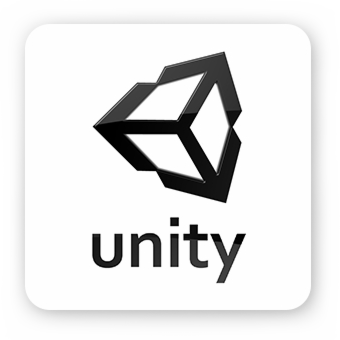Intro to Unity

Are we recording?

About the slides
To navigate them use:
- Mouse wheel
- Left and right arrow keys
- Arrows in bottom right
- Menu in bottom left
- Swipe left/right on a touchscreen
- Home button to go to the homepage
What is a Game Engine?
Software that handles:
- Realtime rendering
- Audio
- Networking
- Physics
- GUI
- Scripting
Why use Unity?
Pros:
- Huge community
- Easy to use
- 2D and 3D support
- Universal creation tool
- Cross-platform
- It's free*
Cons:
- Closed Source
Games made with Unity
- Hearthstone
- Subnautica
- Ori and the Blind Forest
- Hollow Knight
- Cuphead
- ...
Unity is HUGE
Don't try to learn it all at once!

System Requirements
- OS:
- Windows 7, 8, 10 64-bit versions only
- Mac OS X 10.12+
- Ubuntu 16.04, 18.04 or CentOS 7
- CPU: X64 with SSE2 support
- GPU: DX10, DX11 and DX12 capable
Further details here
Unity Hub
- Manage your Unity versions
- Modify build targets outside of the Editor
- Get it here
Select your license
If you have made:
- < $100K in the last 12 months with Unity then you can choose Unity Personal (It's free)
- > $100K in the last 12 months with Unity then you probably don't need this course :D
Download Unity
- Go to Unity Hub/Installs
- Get the latest version of Unity
IDE Support
- Visual Studio for PC and Mac
- JetBrains Rider for Linux
Make sure to get the Unity Tools plugin for your IDE
Making your first Unity project
- Go to Unity Hub/Projects
- Click NEW
- Select the 3D template
- Name your project
- Click CREATE
Editor Elements
- Toolbar
- Project View
- Scene Hierarchy
- Scene View
- Game View
- Inspector
- Console
- Asset Store
Modifying the Editor
- Resizing windows
- Docking windows
- Adding more windows
- Can always revert to the Default Layout
Navigating the Scene View
- Scene Gizmo
- Align Scene View Camera to the different axes
- Perspective/Ortographic Mode
- Hand Tool + Left Click to move
- Reft Click to orbit
- Scroll Wheel to zoom
- Right Click + QWASDE for Flythrough Mode
- Shift to go faster
Essential Shortcuts
- Right Click in Project window/Scene view to add item
- QWERTY for the different tools
- Ctrl/Cmd + Z to undo
- Ctrl + Y to redo on Windows
- Cmd + Shift + Z to redo on Mac
- F to focus on object
- Ctrl/Cmd + Shift + F to align object with view
- Shift + Space to maximize window
Cheat Sheet from Brackeys
Game Objects
Every object in the scene is a Game Object
Game Objects also:
- Have a Name
- Have a Tag
- Have a Layer
- Can be parented
- Can be active/disabled
- Require components to become "functional"
- Always have a Transform Component
Components
They provide Game Objects with logic
Let's explore the ever-present Transform Component
Click on GameObject/3D Object/Cube to make a cube
Its Transform Component has:
- Position
- Rotation
- Scale
Hello World Script
public class HelloWorldScript : MonoBehaviour {
void Start() {
print("Hello World");
}
}
Using the Hello World Script
- Compile it
- Attach it to a Game Object
- Click Play to enter Play Mode
- ????
- PROFIT!

Important!
Changes made during Play Mode don't stay after exiting it
Extra Resources
Homework
- Install Unity
- Play around with the Editor
- Play around with the Learn section of Unity Hub
Questions?
